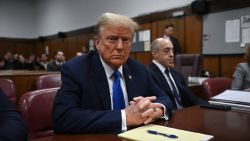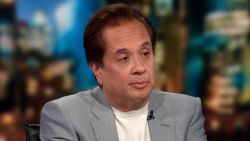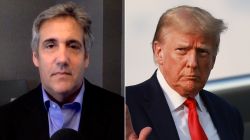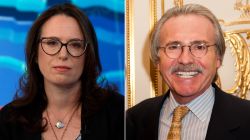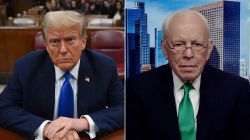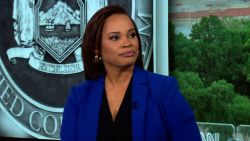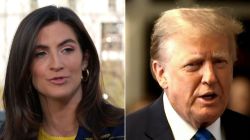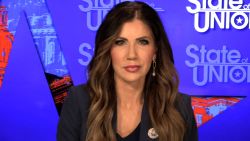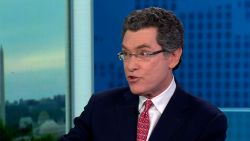A pair of institutions traditionally associated with white conservative men arrived at two very different conclusions Wednesday about symbols of America’s racist past.
President Donald Trump, upset after catching wind of his own military’s openness to changing the names of certain bases honoring Confederate commanders, decreed such a change wouldn’t happen on his watch.
NASCAR, responding to an appeal from its only full-time black driver, declared it was banning the Confederate flag at its races, where the historic symbol of Southern secession has been a common sight.
The dueling announcements, made within the same three-hour window, illustrate the entrenched position Trump has staked out as the nation continues to reckon with historic disparities on race and police brutality and as he frets about his diminished political prospects.
Even as private companies, sports leagues, local and state governments, the US military, media properties and academic institutions attempt to reconcile the historic role that racism and white supremacy have played in their own histories – and the nation’s history – Trump has repeatedly rebuffed such an examination and instead returned to the notion of preserving the country’s heritage.
A number of Trump’s advisers, from White House aides to members of Congress to executives in the corporate world, have encouraged the President to adopt and adapt his tone – both to meet the national moment and, they argue, to improve his political standing. But Trump has steadfastly refused, even while entities just as steeped in conservative America – such as NASCAR, whose flagship race he attended this year in Daytona – begin moving on.
The President remains convinced the racially tinged culture wars he stoked as a candidate in 2016 and throughout his presidency remain a winning strategy, people familiar with his thinking say. As polls now consistently show him trailing former Vice President Joe Biden by double digits, Trump has insisted on attempting to re-create the political formula that helped propel him to the White House.
“To this point, Trump’s instincts as a culture warrior have been proven correct politically. Combine that with his unwillingness to apologize or back down, and it should come as no surprise that he’s sticking to his guns on the monuments, base names and kneeling during the National Anthem,” one outside adviser to the President said. “So, even though this feels like a national moment unlike anything we’ve experienced before, I still wouldn’t bet against his political instincts.”
Other Trump allies have encouraged a more conciliatory approach. Asked if the President should deliver remarks in a bid to heal the country, Republican Sen. Lindsey Graham of South Carolina told CNN: “I think maybe instead of speaking he should do some listening.”
After protests broke out across the nation the first weekend following George Floyd’s death, Trump’s aides received an onslaught of calls from outside advisers and allies asking why he was staying silent and what his message would be when he did speak.
Some advised that he strike a message of unity as the nation reeled from the death of yet another black man at the hands of police. Others bluntly said that if he didn’t do more to quell the violence breaking out, he would lose suburban female voters, a key demographic in November.
After receiving the conflicting advice, Trump sided with those favoring “law and order,” reverting to a decades-old theme he instinctually believes plays well with most Americans. He threatened to send the US military to quell protests and staged a defiant photo op outside St. John’s Church, whose basement had been burned.
If the strategy appeared to Trump in the moment a success, however, in the days that followed White House officials received repeated warnings that the President risked losing inroads he had made with black supporters over the last year. The prospect alarmed some of Trump’s political advisers, who had seen internal improvement in his numbers with African Americans and had even opened field offices in swing states that were focused on attracting black voters.
Aides planned listening sessions for Trump with black leaders that took days to materialize, including one on Wednesday that only included participants who already support him. It came several days after Vice President Mike Pence was criticized for inviting Candace Owens, a black conservative activist, to one of his roundtables.
In a viral Facebook video, Owens called George Floyd a “horrible human being” and said “racially motivated police brutality is a myth.” Pence, who has condemned rioting but hasn’t taken the same hardline stance as the President, told a mostly black congregation at a church in Maryland the next day that the images of Floyd’s death “shocked the conscience of a nation.”
In the meeting Wednesday, Trump did not address issues of systemic racism at length. Instead, he again claimed he’d done more for the black community than any past president.
Trump’s racially infused politics have often made Republicans uncomfortable, but that discomfort appears to be turning into unease five months from Election Day. A CNN poll released this week showed Trump’s approval rating down 7 points in the last month and now in the same terrain as Presidents Jimmy Carter and George H.W. Bush, both of whom lost their bids for a second term. That comes after an average of six prior polls showed Biden up by 10 nationally.
Polls have also shown that Americans increasingly say racism and discrimination are major problems facing the country, a growing recognition of problems black Americans have long said plague US society. Those evolving views have led to changes at even some institutions that had appeared immovable only a few years ago.
“The display of the Confederate flag will be prohibited from all NASCAR events and properties,” the racing league said in a statement Wednesday after Bubba Wallace, its only full-time black driver, said in an interview on CNN that there was “no place for them” in the stands. Wallace plans to drive his #43 Chevrolet with #blacklivesmatter painted over the rear wheels at a NASCAR Cup Series race in Virginia this weekend.
Trump has long catered to a similar crowd as NASCAR and sought to enthuse fans in February when he flew Air Force One over the stands at the Daytona 500. Confederate flags are also a common sight at the President’s campaign rallies, which he plans to resume next week in Tulsa, Oklahoma.
As Trump’s handling of race relations has come under fire, he is receiving advice from a mostly white inner circle. The President has consulted Housing and Urban Development Secretary Ben Carson, his only black Cabinet member, in recent days for advice.
Carson, who has referred to Trump’s walk to St. John’s Church as the “Lafayette episode” both publicly and privately, encouraged the President to sit down with leaders from the black community like he did on Wednesday. Other members of Trump’s staff, in an attempt to inspire empathy, have relayed to him their own experiences with racism or passed along experiences from friends over the past week.
Yet as calls increase for serious changes to policing meant to address issues of systemic bias and racism, Trump has maintained instead the “law and order” mantra, which, through images of “vicious dogs” and vows to shoot looters, evokes the violence of a darker time.
As he enters perhaps the most precarious political terrain of his presidency, Trump has insisted on avoiding any steps that might appear conciliatory or weak. And he has maintained staunch support for symbols of America’s racist history even as much of the country appears ready to move on.
On Wednesday, Trump was upset to learn that senior Pentagon brass – including Army Secretary Ryan McCarthy, Defense Secretary Mark Esper and Joint Chiefs Chairman Gen. Mark Milley – had signaled their openness to a discussion about renaming nearly a dozen major bases and installations that bear the names of Confederate military commanders.
In an impromptu midafternoon meeting with his press secretary, Trump dictated a tweet declaring such a proposition a nonstarter.
“These Monumental and very Powerful Bases have become part of a Great American Heritage, and a history of Winning, Victory, and Freedom,” Trump said of the installations, even though they are named after Confederate commanders whose side neither won the Civil War nor is typically associated with freedom.
It was another example of Trump appearing caught off guard by his own military advisers; he came close to firing Esper last week after the defense secretary publicly broke with the President on the idea of using the Insurrection Act to send active-duty military into American cities to tamp down protests. But it was also an illustration of the competing interests Esper faces as he presides over an American military that remains a historic bastion of diversity even as he must satisfy a President with altogether different interests.
Trump’s argument against renaming the bases harkened back to the last time racial tensions brewed during his presidency, when a 2017 attempt to remove a Confederate statue in Charlottesville, Virginia, resulted in violent protests from white supremacist groups. Back then, Trump defended protesters who had gathered to object when the city was removing a statue of Robert E. Lee.
“This week, it is Robert E. Lee. I noticed that Stonewall Jackson is coming down,” he said during a now-infamous news conference in the lobby of Trump Tower in Manhattan in which he also declared there were “fine people” on both sides of the clashes. “I wonder, is it George Washington next week? And is it Thomas Jefferson the week after? You know, you really do have to ask yourself, where does it stop?”
The news conference emerged as a low point in Trump’s tenure. Corporate executives fled his business advisory boards. Senior aides considered resigning. Charities withdrew their gala fundraisers from his Mar-a-Lago club. Even his then-UN ambassador, Nikki Haley – one of his most loyal deputies, who, as governor of South Carolina, ordered the removal of the Confederate flag – called him to “stop acknowledging the haters,” according to her memoir.
But if there was any concern about repeating the episode, it was not apparent. On Wednesday, the White House returned to the very same argument – using almost identical language – that Trump had made that day.
“Where do you draw the line?” press secretary Kayleigh McEnany asked during a briefing at the White House. “Should George Washington and Thomas Jefferson and James Madison be erased from history?”





